Stratos Idreos
Flash Inference: Near Linear Time Inference for Long Convolution Sequence Models and Beyond
Oct 16, 2024Abstract:While transformers have been at the core of most recent advancements in sequence generative models, their computational cost remains quadratic in sequence length. Several subquadratic architectures have been proposed to address this computational issue. Some of them, including long convolution sequence models (LCSMs), such as Hyena, address this issue at training time but remain quadratic during inference. We propose a method for speeding up LCSMs' exact inference to quasilinear $O(L\log^2L)$ time, identify the key properties that make this possible, and propose a general framework that exploits these. Our approach, inspired by previous work on relaxed polynomial interpolation, is based on a tiling which helps decrease memory movement and share computation. It has the added benefit of allowing for almost complete parallelization across layers of the position-mixing part of the architecture. Empirically, we provide a proof of concept implementation for Hyena, which gets up to $1.6\times$ end-to-end improvement over standard inference by improving $50\times$ within the position-mixing part.
TorchTitan: One-stop PyTorch native solution for production ready LLM pre-training
Oct 09, 2024Abstract:The development of large language models (LLMs) has been instrumental in advancing state-of-the-art natural language processing applications. Training LLMs with billions of parameters and trillions of tokens require sophisticated distributed systems that enable composing and comparing several state-of-the-art techniques in order to efficiently scale across thousands of accelerators. However, existing solutions are complex, scattered across multiple libraries/repositories, lack interoperability, and are cumbersome to maintain. Thus, curating and empirically comparing training recipes require non-trivial engineering effort. This paper introduces TorchTitan, an open-source, PyTorch-native distributed training system that unifies state-of-the-art techniques, streamlining integration and reducing overhead. TorchTitan enables 3D parallelism in a modular manner with elastic scaling, providing comprehensive logging, checkpointing, and debugging tools for production-ready training. It also incorporates hardware-software co-designed solutions, leveraging features like Float8 training and SymmetricMemory. As a flexible test bed, TorchTitan facilitates custom recipe curation and comparison, allowing us to develop optimized training recipes for Llama 3.1 and provide guidance on selecting techniques for maximum efficiency based on our experiences. We thoroughly assess TorchTitan on the Llama 3.1 family of LLMs, spanning 8 billion to 405 billion parameters, and showcase its exceptional performance, modular composability, and elastic scalability. By stacking training optimizations, we demonstrate accelerations of 65.08% with 1D parallelism at the 128-GPU scale (Llama 3.1 8B), an additional 12.59% with 2D parallelism at the 256-GPU scale (Llama 3.1 70B), and an additional 30% with 3D parallelism at the 512-GPU scale (Llama 3.1 405B) on NVIDIA H100 GPUs over optimized baselines.
Proteus: A Self-Designing Range Filter
Jun 30, 2022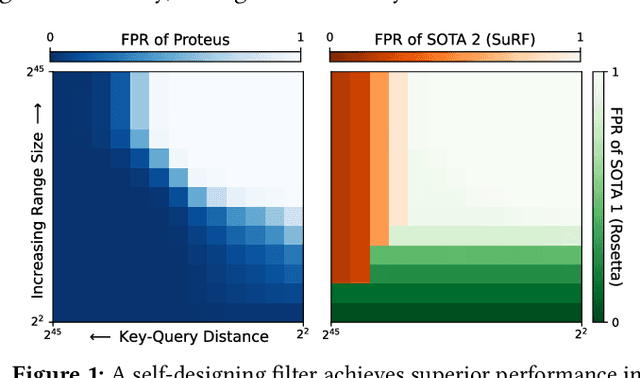

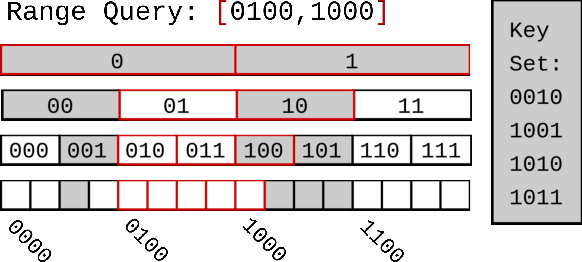
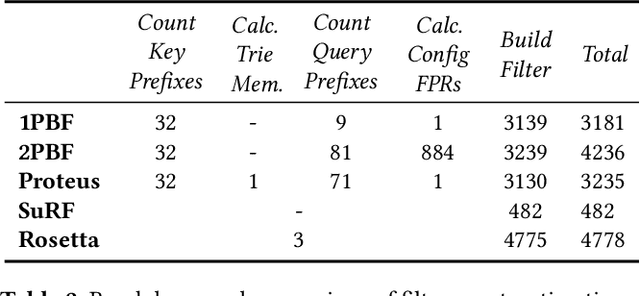
Abstract:We introduce Proteus, a novel self-designing approximate range filter, which configures itself based on sampled data in order to optimize its false positive rate (FPR) for a given space requirement. Proteus unifies the probabilistic and deterministic design spaces of state-of-the-art range filters to achieve robust performance across a larger variety of use cases. At the core of Proteus lies our Contextual Prefix FPR (CPFPR) model - a formal framework for the FPR of prefix-based filters across their design spaces. We empirically demonstrate the accuracy of our model and Proteus' ability to optimize over both synthetic workloads and real-world datasets. We further evaluate Proteus in RocksDB and show that it is able to improve end-to-end performance by as much as 5.3x over more brittle state-of-the-art methods such as SuRF and Rosetta. Our experiments also indicate that the cost of modeling is not significant compared to the end-to-end performance gains and that Proteus is robust to workload shifts.
* 14 pages, 9 figures, originally published in the Proceedings of the 2022 International Conference on Management of Data (SIGMOD'22), ISBN: 9781450392495
Learning Key-Value Store Design
Jul 11, 2019



Abstract:We introduce the concept of design continuums for the data layout of key-value stores. A design continuum unifies major distinct data structure designs under the same model. The critical insight and potential long-term impact is that such unifying models 1) render what we consider up to now as fundamentally different data structures to be seen as views of the very same overall design space, and 2) allow seeing new data structure designs with performance properties that are not feasible by existing designs. The core intuition behind the construction of design continuums is that all data structures arise from the very same set of fundamental design principles, i.e., a small set of data layout design concepts out of which we can synthesize any design that exists in the literature as well as new ones. We show how to construct, evaluate, and expand, design continuums and we also present the first continuum that unifies major data structure designs, i.e., B+tree, B-epsilon-tree, LSM-tree, and LSH-table. The practical benefit of a design continuum is that it creates a fast inference engine for the design of data structures. For example, we can predict near instantly how a specific design change in the underlying storage of a data system would affect performance, or reversely what would be the optimal data structure (from a given set of designs) given workload characteristics and a memory budget. In turn, these properties allow us to envision a new class of self-designing key-value stores with a substantially improved ability to adapt to workload and hardware changes by transitioning between drastically different data structure designs to assume a diverse set of performance properties at will.
Rapid Training of Very Large Ensembles of Diverse Neural Networks
Sep 12, 2018

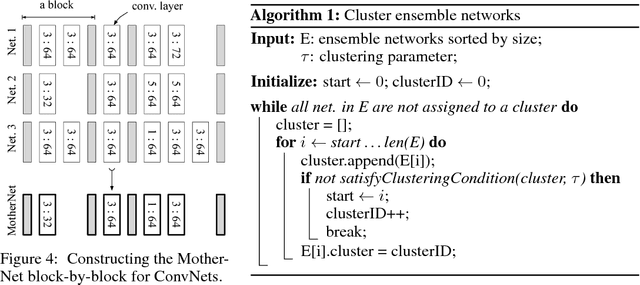
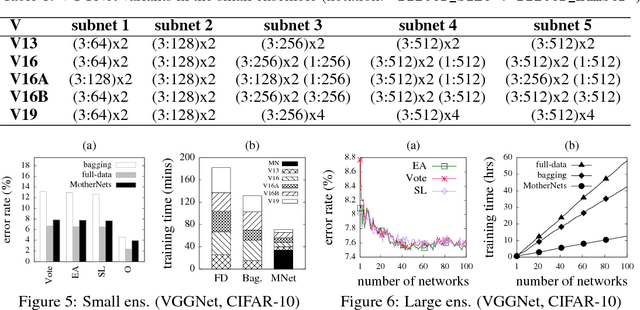
Abstract:Ensembles of deep neural networks with diverse architectures significantly improve generalization accuracy. However, training such ensembles requires a large amount of computational resources and time as every network in the ensemble has to be separately trained. In practice, this restricts the number of different deep neural network architectures that can be included within an ensemble. We propose a new approach to address this problem. Our approach captures the structural similarity between members of a neural network ensemble and train it only once. Subsequently, this knowledge is transferred to all members of the ensemble using function-preserving transformations. Then, these ensemble networks converge significantly faster as compared to training from scratch. We show through experiments on CIFAR-10, CIFAR-100, and SVHN data sets that our approach can train large and diverse ensembles of deep neural networks achieving comparable accuracy to existing approaches in a fraction of their training time. In particular, our approach trains an ensemble of $100$ variants of deep neural networks with diverse architectures up to $6 \times$ faster as compared to existing approaches. This improvement in training cost grows linearly with the size of the ensemble.
 Add to Chrome
Add to Chrome Add to Firefox
Add to Firefox Add to Edge
Add to Edge